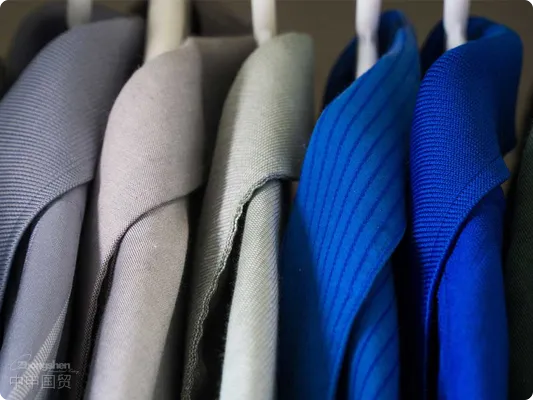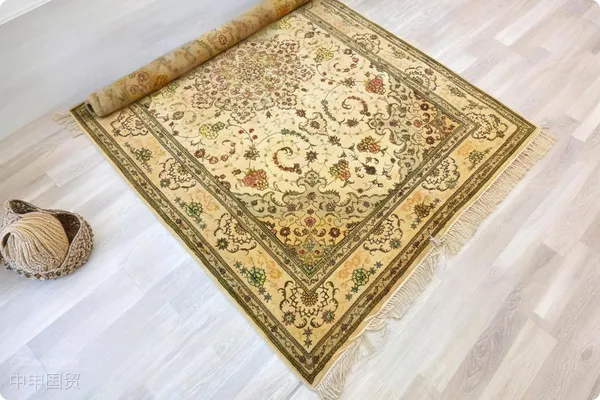- Shanghai Zhongshen International Trade Co., Ltd. - Two decades of trade agency expertise.
- Service Hotline: 139 1787 2118
On the grand stage of international trade, textile and clothing, as an important category of commodities, is not only related to the economic benefits of enterprises, but also closely linked to the national trade order. In theimport and exportoperation process, correct commodity classification, compliant declaration and complete procedure handling are all important factors to ensure smooth customs clearance and improve market competitiveness. This article will comprehensively explain the import and export requirements and precautions for textile and clothing, helping enterprises move forward smoothly in the international market.

I. Key Points of Classification of Textile and Clothing
Commodity classification is the basis for the import and export operation of textile and clothing. Its accuracy directly affects subsequent tariffs, supervision and the enjoyment of preferential policies. The following are the key points of classification for textile and clothing:
Definition of Knitted Shirts
The classification of knitted shirts should comply with the relevant provisions of the Notes on Commodities and Headings of the Import and Export Tariff Regulations. According to the definition in Note 4 to Chapter 61, a shirt refers to a long - sleeved or short - sleeved garment for the upper part of the human body that is fully or half - open at the collar. The clothing in headings 61.05 and 61.06 does not include clothing with pockets below the waist, a ribbed belt and a tightened hem.
Classification of Baby Clothing
The commodity classification of textile and clothing usually does not distinguish between adult and childrens clothing, but there are special tariff numbers for baby clothing. According to Note 6 to Chapter 61 and Note 5 to Chapter 62, baby clothing in headings 61.11 and 62.09 refers to clothing for those with a height not exceeding 86cm, specifically including play clothes, rompers, bibs, gloves, leotards, etc.
II. Declaration and Precautions for Import and Export of Textile and Clothing
After mastering the key points of classification of textile and clothing, enterprises also need to ensure the compliance and efficiency of import and export operations. The following are the key declaration and operation precautions.
Key Points of Declaration
Enterprises can declare to the customs through Internet + or the Single Window, and choose to operate by themselves or entrust a customs declaration enterprise. When declaring, the following aspects need to be paid attention to:
- Declaration Time Limit: Imported goods should be declared within 14 days after the means of transport enters the country; exported goods should be declared to the customs 24 hours before loading.
- Accompanying Documents: Documents such as invoices, bills of lading, and agency customs declaration authorization agreements need to be prepared when declaring.
- Requirements for Special Commodities: For example, infant clothing, close - fitting clothing, etc. may involve more quality and safety compliance requirements.
Commodity Inspection
For clothing within the scope of the legal inspection catalog, enterprises need to apply for inspection as required. Imported clothing must comply with the National Basic Safety Technical Code for Textile Products (GB18401 - 2010) and the Safety Technical Code for Infant and Childrens Textile Products (GB31701 - 2015). Infant and close - fitting clothing are often listed as key supervision objects. Enterprises should ensure that these products meet the standards before declaration.
Common Declaration Elements for Import and Export Clothing
Enterprises should pay special attention to the following elements when declaring the import and export of clothing:
- Classification Declaration Elements: Such as weaving method, type, composition content, etc.
- Price Declaration Elements: Including brand, article number, set composition and quantity, etc. This information helps the customs assess the value of the goods and determine reasonable tariffs and taxes.
Export Tax Rebate (Exemption) Matters
The export tax rebate (exemption) policy is an important preferential policy for export clothing enterprises. Enterprises need to ensure that when handling tax rebate (exemption) procedures in the electronic tax bureau, they provide accurate export data, invoices and other necessary documents to smoothly enjoy the policy preferences.

III. Operation Process and Precautions for Export of Textile and Clothing
During the export process of textile and clothing, the support of an agency company can help enterprises reduce complexity and risks. The following areExport RepresentationBasic operation process and related precautions:
Provide international market quotations and trade consultations
The agency company provides international market quotations and trade practice services according to the enterprises needs, helping the enterprise understand the price level and trading norms of the target market.
Sign trade contracts and prepare documents
The agency company signs the Export Contract for Goods in Trade with foreign merchants and prepares a Proforma Invoice as the basis for the formal contract. At the same time, prepare invoices, packing lists and other necessary documents required for export.foreign tradeAnd handle export licenses
If the foreign customer pays by letter of credit, the agency company needs to review the terms of the letter of credit to ensure there are no risky terms. The agency company prepares export documents, including invoices, packing lists, etc., based on the information provided by the customer.L/CIf foreign merchants adopt the letter of credit payment method, the agency company will review the terms of the letter of credit to ensure that there are no soft risks in the terms. After that, the agency company assists the enterprise in handling export licenses to ensure compliance with relevant national laws and regulations.
Arrange freight transportation and customs declaration operations
The agency company arranges freight transportation according to the contract requirements, including booking shipping space, transportation and insurance, etc. Subsequently, the agency company prepares materials and handles customs declaration procedures to ensure the legal export of goods.
Delivery of documents andExport ClearanceAfter export, the agency company delivers the full set of documents to foreign merchants or banks according to the contract terms for payment settlement and goods pickup. After the payment arrives, the agency company conducts foreign exchange settlement and handles foreign exchange verification to ensure the legal and compliant flow of funds.
The technical standards for importing textiles and clothing vary from country to country. For example:In order to crack down on tax evasion, the customs and tax departments are now strictly examining the operation of buying export declarations. If the behavior of buying export declarations is discovered, the regulatory authorities will require tax replenishment (even a 2% tax rate may be a considerable amount). In addition, fines may also be imposed on the relevant responsible parties.Operation
: Clothing exported to the EU needs to meet the relevant requirements of CE certification to ensure safety, environmental protection and compliance with market access standards.
IV. Compliance and Common Risk Points
Compliance Certification and Quality Standards
: Clothing exported to the US needs to meet the safety standards of CPSC, such as restrictions on chemical components.
- European Union MarketIn recent years, the EU and the US have become increasingly strict in the quality supervision of textiles. Common quality problems include excessive chemical content and non - compliant fiber composition. Before export, enterprises should strictly control the selection of raw materials and the manufacturing process of products to meet the quality and safety standards of the importing country.
- US MarketThe import and export operations of textiles and clothing involve many links such as commodity classification, declaration, quality compliance and market access. Accurate classification and declaration can ensure the smooth customs clearance of products, and correct process management can help enterprises save costs and improve their competitiveness in the international market. In this process, the support of export agency companies is particularly important. Through professional agency services, enterprises can entrust complex operations to professionals, so as to focus more on product production and market development. It is hoped that this article can provide some useful guidance for textile and clothing export enterprises and help them achieve greater success in the international market.
Common Quality Problems and Solutions
Detailed Explanation of Import and Export Operations and Comprehensive Analysis of Compliance for Eye - Care Products

V. Summary
How to Successfully Export Textiles and Clothing? Export Compliance Operation Guide | Shanghai Import/Export Agent
Related Recommendations
? 2025. All Rights Reserved. Shanghai ICP No. 2023007705-2  PSB Record: Shanghai No.31011502009912
PSB Record: Shanghai No.31011502009912









